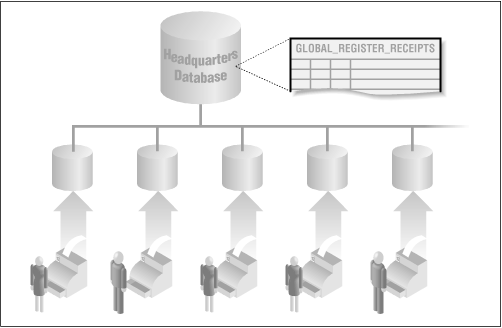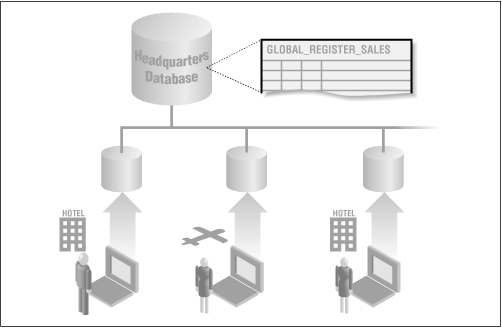Data Collection and Consolidation
Manyorganizations gather data from several locations and consolidate it into a single database. The single database is often a centralized, company-wide repository. Examples include retail chains that upload sales data from their sales outlets every night (see Figure 7.9) or a sales force armed with laptops into which they enter data about customer leads (see Figure 7.10). The distinguishing feature of these scenarios is that the databases are not expected to be in constant contact with one another; data latency can be quite high, while bandwidth can be quite low.

Figure 7-9. Retail stores communicate with headquarters nightly

Figure 7-10. Sales personnel synchronize laptops with headquarters
Both of these scenarios are perfect candidates for Oracle’s updateable snapshots, a feature of advanced replication. Updateable snapshots work well in these environments because data can be horizontally partitioned and because updates to the data can be pushed to the master site on demand. The retail outlets can upload daily sales transactions after the store closes, and the traveling salespeople can send updates to headquarters when they check into their hotels and potentially receive updates that their colleagues have made.
As with multi-master replication, updateable ...
Get Oracle Distributed Systems now with the O’Reilly learning platform.
O’Reilly members experience books, live events, courses curated by job role, and more from O’Reilly and nearly 200 top publishers.

